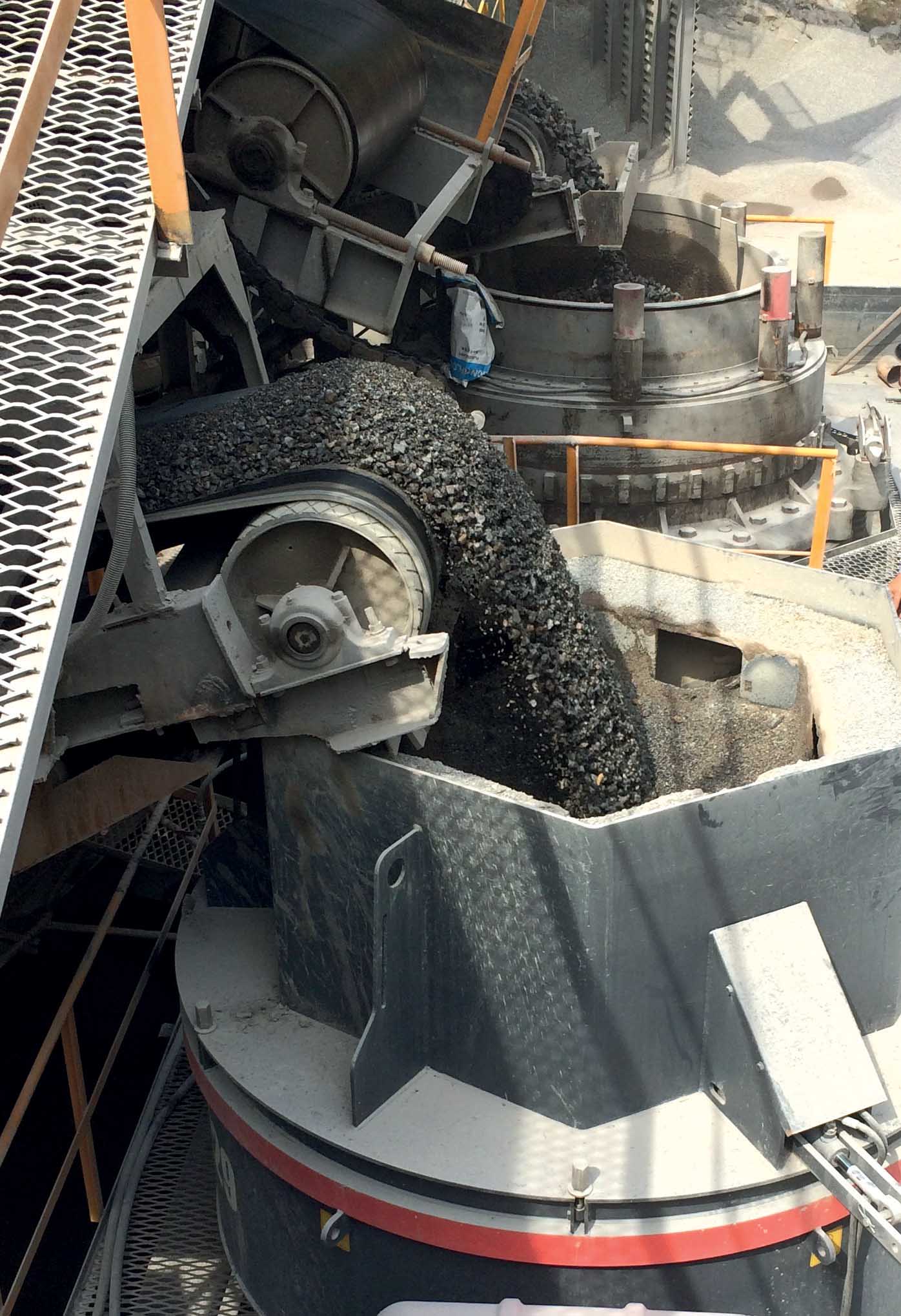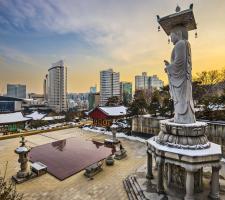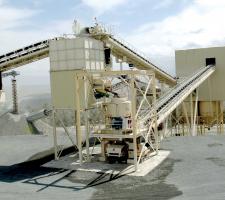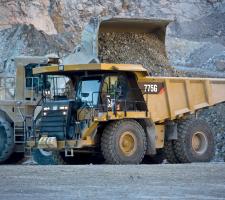
The delivery of the South Korean government’s 2013-announced US$108.6 billion plans to develop road, rail and other transport infrastructure, the country’s staging of the 2018 Winter Olympics in Pyeongchang, and some eye-catching commercial construction projects alongside an increase in residential building, is creating stronger domestic demand for aggregates and construction equipment, writes Guy Woodford.
South Korea is becoming a land of big opportunity for the aggregates and quarry-based construction equipment sectors.
Leading business market analyst Timetric notes how the commercial construction market of Asia’s fourth largest economy is being supported by a number of hotel and resort development projects. 20th Century Fox, one of America’s six major film studios, is planning to build a $3.5 billion 75-acre theme park in Changwon City, which is expected to be completed in 2018. Furthermore, French hotel group Accor SA is said to be in the process of constructing a 300-room hotel in Seoul, due for completion in 2016.
Despite another leading business market analyst, Euromonitor International (EI), describing the South Korean construction industry as heavily fragmented, with its top five players generating less than 11% of revenue, the industry is expected by EI to grow by 22% between 2013-2018, fuelled by the significant government attention on new transport infrastructure and residential construction.
On a less encouraging note, Korean Cement Association figures indicate that cement production as well as consumption growth has remained flat in the last five years at around 47 million tonnes, against the country total cement installed capacity of around 68 million tonnes from the nine to ten large producing companies.
However, the Korean Aggregates Association says demand for sand and gravel is expected to grow by 1% in 2015 to 203,447,000m³, which will be an increase for the third consecutive year. While in metropolitan areas, demand is projected to be up by 1.3% compared to 2014, thanks to relaxed governmental regulations for real estate development. Additionally, an increased Social Overhead Capital (SOC) budget of 4.7% is expected to lead to more investment in civil works.
Volvo Construction Equipment (
“There are some risks in the business outlook for 2015, but still we expect a slightly stronger total market compared to the previous year,” explains Frederic Ruesche, president of Volvo CE in Korea. “We are well positioned to capture an increasingly larger share of the quarry and aggregates market,” he says. “The combination of Volvo’s excavators, wheeled loaders and articulated haulers is the quarry owners’ best offering in terms of fuel efficiency, productivity and safety.”
Volvo CE is among leading construction OEMs set to benefit from this year´s introduction of the stringent Tier 4 Final/Stage IV emissions regulations for off-road equipment in Korea. Volvo CE’s proven Tier 4 Final-solution is said by Ruesche to be already selling well in other parts of the world.
Finnish crushing and screening equipment giant
“Downtime and cost per tonne are very critical for them and as such they are now more open to adapt and invest in the superior technology from Europe. Metso has a good opportunity to introduce their products and high class technology and increase our market share,” says Suhen Agarwal, vice president, Metso crushing and screening equipment sales and distribution, Oceania.
“In the heavy civil construction sector, customers are looking for more sturdy/ reliable equipment that can give consistent performance till the end of the project,” continues Agarwal. “Our HP Cones particularly are popular in Korea and have made a niche positioning over competition.”
Of growth opportunities for crushing and screening equipment manufacturers such as Metso, Argwal adds: “South Korea produces around 200 million tonnes of aggregates. With a few major infrastructure projects in the pipeline like the Winter Olympics, the Incheon International Airport expansion, and high-speed train projects, the demand for aggregates is expected to go up. Moreover, there is a good opportunity for quarry owners and operators to upgrade the existing crushing plants and machineries.
“One of the positive changes seen is the business passing over to the next younger generation who are amenable to invest in better technology and are not sensitive in initial investment, but are particular about higher return on their investment. This will help companies like us introduce our products and demonstrate better performance, thus getting repeat and new business. “
Samjae Shin, of Sandvik Suhjun,
Shin believes sales growth can be achieved through supplying plant automation solutions, such as Sandvik Construction’s ASRi system, as most businesses using crushing plants are finding it difficult to hire skilled operators.
Rahul Srivastava,
He says Caterpillar and Hae In Corporation, its South Korean dealer, have been providing total solutions to the local quarry and aggregates industry for more than five decades along with comprehensive after-sales support. “As a result, many of the captive limestone quarries of Korean cement producers are using Cat load and haul products along with the excavators to help them improve the cost per tonne of their quarry operations.”
According to Srivastava, 70tonne and 60tonne Cat quarry trucks along with 17 and 24tonne Cat large wheeled loaders are the norm in Korean limestone quarries. “The Cat 775G and 773G are two popular latest series quarry trucks that haul the blasted limestone to the crushers. These trucks are loaded by Cat 990 and 992 large wheeled loaders that offer higher mobility and lower operating costs.
“For smaller quarries Cat excavators 329, 336 and 349 are a popular choice and in aggregate handling the 966, 972 and 980 medium wheeled loaders help customers to reduce their aggregates handling cost per tonne,” adds Srivastava.












